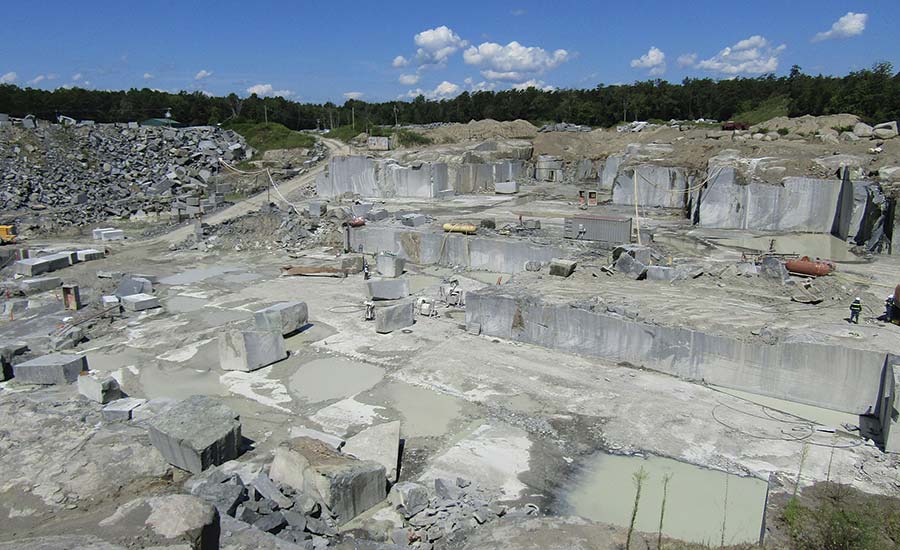Introducing Granite Quarries in South Africa Heritage: A Trip Via Quarries
Introducing Granite Quarries in South Africa Heritage: A Trip Via Quarries
Blog Article
Introducing the Mysteries of Granite Quarrying: Where Strength and Beauty Meet
The globe of granite quarrying is a world where the raw toughness of nature converges with human creativity to produce frameworks that stand the examination of time with an air of beauty. From the depths of quarries to the careful sprucing up in workshops, the procedure of transforming granite into architectural marvels is a complicated dancing of practice and innovation. As we peer into the depths of this ancient craft, we begin to discover the concealed ins and outs that form the very essence of our built atmosphere.
The Origins of Granite Quarrying
In the annals of architectural history, the origins of granite quarrying are shrouded in a tapestry of ancient craftsmanship and geological marvels. Dating back to ancient Egypt and Mesopotamia, the extraction of granite from quarries marked the beginning of a journey that would eventually result in the development of a few of the world's most renowned structures.
Granite quarrying's roots can be traced to the proficient craftsmens that acknowledged the stone's toughness and visual charm. With a combination of primitive tools and sheer determination, these early quarry workers uncovered granite blocks that would certainly come to be the structure blocks of human beings.
As human beings progressed, so did the methods of quarrying granite. The Romans, renowned for their engineering prowess, developed advanced approaches for removing granite to build monuments, temples, and roadways that stood the examination of time.
The tradition of these ancient quarrying techniques proceeds to shape modern architecture, with granite continuing to be an icon of stamina and beauty in construction projects around the world. (granite quarries in south africa)
Tools of the Quarrying Profession
The evolution of granite quarrying techniques from old civilizations to contemporary times highlights the essential role played by the tools of the quarrying sell shaping the market's techniques. In old times, quarrying tools were simple, often containing knives, hammers, and wedges made from products like bronze or iron. These tools needed substantial manpower and time to extract granite obstructs from quarries.

In addition, the intro of pneumatically-driven devices and high-powered machinery has considerably decreased the physical labor needed in quarrying operations, enhancing worker safety and performance. As the quarrying sector proceeds to introduce, the tools of the trade remain at the center of driving progression and forming the future of granite extraction.
Extracting Blocks of Granite
Utilizing accuracy equipment and progressed techniques, the extraction of granite obstructs from quarries has actually ended up being an advanced process in the modern-day quarrying sector. The preliminary step entails recognizing the place and size of the granite down payment to establish the most efficient removal technique. Once a over here suitable website is chosen, the extraction procedure begins with the exploration of openings for the placement of nitroglycerins. Managed blasting strategies are then employed to disintegrate the granite into convenient sections.

Sprucing Up and Finishing Methods
To accomplish a flawless surface on granite blocks, skilled artisans use a series of careful sprucing up and finishing methods. After the first extraction and shaping procedures, the granite obstructs undergo a complete polishing phase to improve their all-natural beauty and sturdiness.
Along with polishing, finishing methods are used to more refine the granite's appearance. These methods might consist of flaming, honing, or brushing, each offering distinct appearances and coatings to suit different aesthetic preferences. Flaming, for instance, includes revealing the granite surface area to heats to create a rough, textured surface, suitable for outside applications where slip-resistance is crucial. Sharpening, on the other hand, provides a matte finish that is smooth to the touch, perfect for indoor countertops and flooring. By thoroughly choosing and applying these polishing and completing methods, artisans can transform raw granite blocks into beautiful pieces that showcase Extra resources both strength and style.

Environmental Influence and Sustainability
With the growing focus on environmental awareness in the industry, granite quarrying methods are increasingly inspected for their impact on natural deposits and long-term sustainability. Quarrying for granite can have considerable ecological implications. The removal procedure frequently entails the use of heavy equipment, nitroglycerins, and large quantities of water, bring about habitat damage, dirt erosion, and water contamination. In addition, the transport of granite from quarries to processing facilities produces carbon exhausts, even more adding to ecological destruction. granite quarries in south africa.
To minimize these impacts and ensure sustainability in granite quarrying, industry stakeholders are embracing different procedures. Applying innovative modern technologies to reduce power consumption and water use, redeeming quarried land for eco-friendly restoration, and advertising liable sourcing techniques are some approaches being used. Accreditations such as the Forest Stewardship Council (FSC) and the Management in Power and Environmental Style (LEED) assistance consumers identify ecologically friendly granite items.
Final Thought
To conclude, granite quarrying is a procedure that requires specialized devices and strategies to extract blocks of granite and brighten them to a high degree of surface. While the ecological effect of quarrying can be considerable, initiatives are being made to boost sustainability practices in the industry. In general, granite quarrying is a fragile equilibrium in between taking advantage of the stamina and sophistication of this all-natural stone while lessening why not look here its influence on the atmosphere.
Report this page